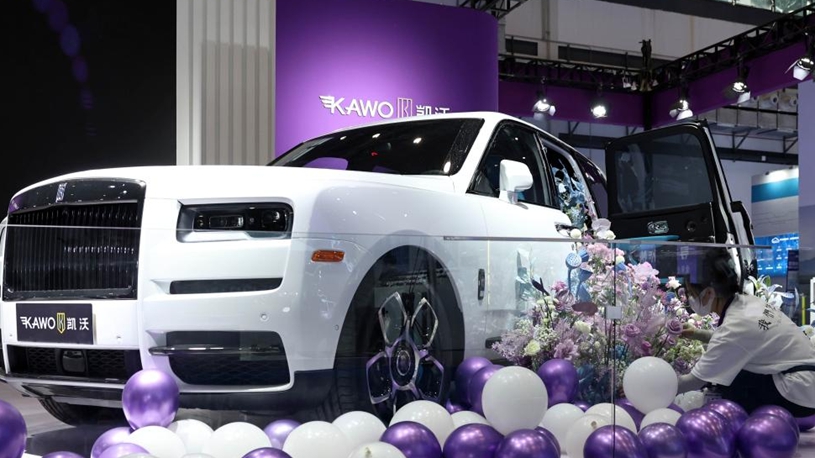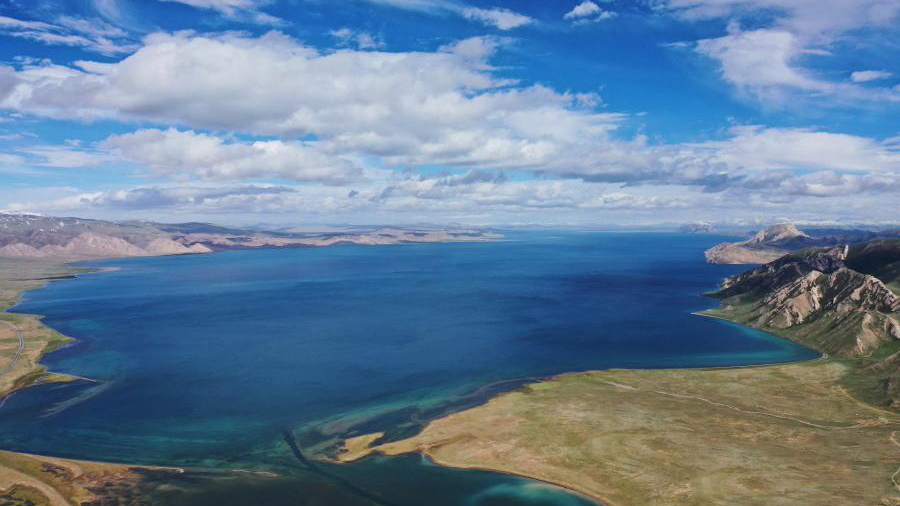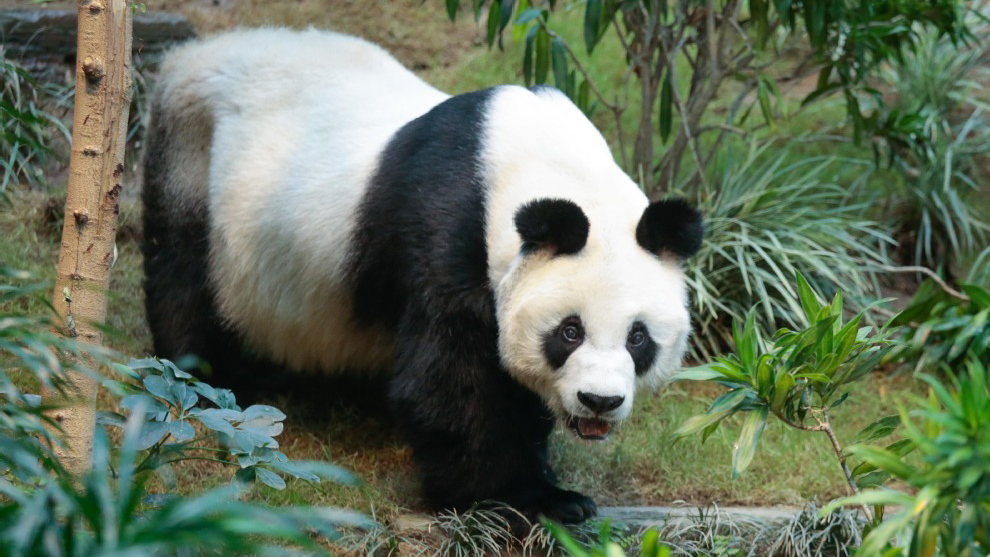Inspiring cultural confidence
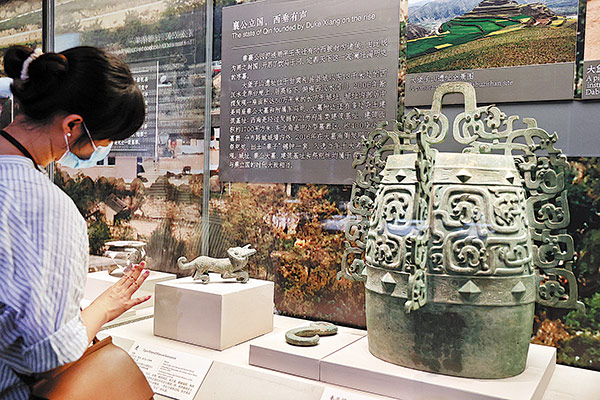
Profound Accumulation, Far-reaching Influence, an exhibition, reviews the National Museum's achievements in major archaeological excavations since 1912. [Photo by Jiang Dong/China Daily]
A world-class city should have world-class museums that preserve the best examples of culture and civilization.
The National Museum of China, located in central area of Beijing, claims to be one of the largest single-building museums and one of the most-visited cultural destinations in the world. Every year, it attracts millions of visitors who are amazed by the variety of objects in the museum's collection that keep alive the memories of the past and shed light on the journey of human civilization.
Celebrating its 110th anniversary this year, the National Museum views its goal of becoming the world's leading museum as being even clearer and closer than ever-especially with the enhanced motivation encouraged by a recent letter from President Xi Jinping.
Xi, who himself has visited the National Museum several times, sent congratulations to the staff members of the museum on its anniversary. In the letter he stressed better utilization of cultural relics to promote exchanges and mutual learning among civilizations and preservation of the fine accomplishments of Chinese civilization. He noted that museums are important places for the protection and inheritance of human civilization, and that cultural and museum workers have a glorious mission and great responsibility.
The president made the remarks in reply to a letter sent to him earlier by 10 senior experts at the National Museum discussing their work and studies.
The National Museum traces its history to the establishment of a preparatory office of the museum of Chinese history in 1912. Through the decades of evolution, the museum got its current title in 2003 by merging of the National Museum of Chinese History and the National Museum of the Chinese Revolution.
The museum has mounted a diverse program of celebrations throughout the year, including exhibitions and forums.
Xi's letter has generated enthusiastic responses, at the museum and outside, among administrators and experts working at different departments concerning cultural relics and museology. They gathered recently at the National Museum at a panel discussion on the letter and about how to better utilize cultural relics for the benefit of the people.
Wang Chunfa director of the National Museum says the letter offers great encouragement to all those working at the museum, and maps out the direction and routes of its development.
"The past 110 years have seen unremitting efforts made by generations of National Museum staff in achieving progress in terms of assembling an immense collection, carrying out research, mounting exhibitions, developing full-fledged public education programs, improving visitor services and increasing international exchanges," Wang says.
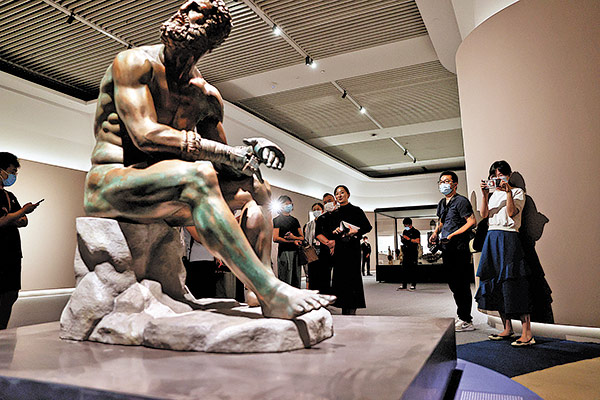
Statue of the Boxer at Rest on show at Tota Italia: Origins of a Nation. [Photo by Jiang Dong/China Daily]
He says the museum will further its contribution to strengthening cultural confidence through intensified academic studies, innovative exhibition plans, creative cultural products and widening international exchanges.
By protecting, inheriting and showing the fruits of the Chinese civilization well, Wang adds, the image of a "credible, lovable and respectable China" will be presented in an even more glamorous, dynamic manner.
Despite the difficulties during the COVID-19 pandemic, the National Museum has still managed to present new exhibitions to celebrate its century-long advancement. It has just opened an exhibition presenting its achievements in major archaeological excavations since 1912 and another of historic coins and bronze ware donated by Luo Bozhao, a prominent numismatist of modern China, as a way to thank the generosity of collectors in helping the museum build its assembly of art and antiques.
The National Museum has joined hands with the Italian Ministry of Culture and the National Roman Museum to present an ongoing exhibition, Tota Italia: Origins of a Nation, in Beijing.
Xi and Italian President Sergio Mattarella respectively sent letters of congratulations on the exhibition opening.
Meanwhile, the National Museum is showing part of its collection reflecting 5,000 years of Chinese food culture at the Liechtenstein National Museum.
The National Museum has also introduced its first AI staff member, a robot named Ai Wenwen, who has just graduated from school and begun her exploration of the museum's treasure trove, and who will usher visitors into a time-traveling journey through the country's long history and immense cultural heritage.
In a global attractions attendance report for 2020, published by the Themed Entertainment Association, an international nonprofit association, and multinational engineering firm AECOM, the National Museum was ranked second.
The museum first made to the annual index, covering the world's top themed parks, water parks and museums, in 2012 when it ranked 14th. The next year it ascended to the third most-visited museum in the world. It has held the second place since 2014, and even topped the index in 2016.
Gu Yucai, deputy director of the National Cultural Heritage Administration who also attended the panel discussion, says, since 2012, the country has seen the number of museums increase to 6,183, which means an addition of a museum every 1.4 days on average. He says museums have improved in quality and service level, and have experienced a more balanced development, and they will become a stronghold to promote the fine traditions of Chinese culture and core socialist values.
Photos
Related Stories
- Exploring the beauty of Chinese civilization: Traditional instruments in modern music
- Exhibition of ancient Roman civilization brought to Beijing
- 8 Qing Dynasty stone tablets found in SW China shrine
- Gansu Provincial Museum promotes cultural products featuring ancient bronze horse statue
- Exhibition of ancient Chinese 'Jin State' unveiled in Nanjing Museum
Copyright © 2022 People's Daily Online. All Rights Reserved.







